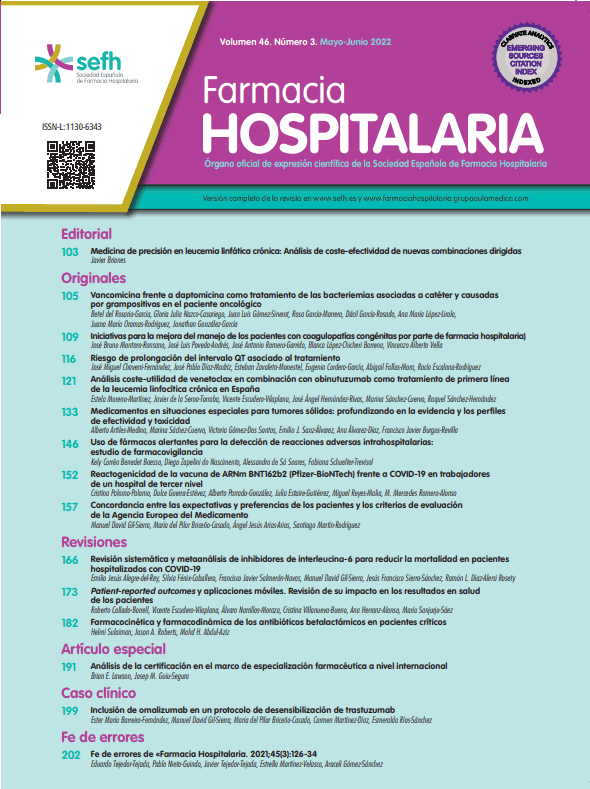Lenalidomide (LDM) is an immunomodulatory and anti-angiogenic drug which has been shown to be effective in several haematological disorders (multiple myeloma [MM], myeloid metaplasia with myelofibrosis [MF] and myelodysplastic syndrome [MDS]). The objective of this study is to evaluate the effectiveness and tolerability of LDM in our patients.
MethodRetrospective observational study which included patients at our hospital who were monitored by the haematology unit, diagnosed with MM, MF and MDS and candidates for LDM treatment. Treatment effectiveness was assessed after approximately 4 cycles of treatment.
ResultsBetween February 2007 and March 2008, 16 patients were listed as candidates for receiving treatment with LDM (50% female/50% male, with a mean age of 69.6 years); of these candidates, 3 never initiated treatment. Five of the six patients with MM treated at our hospital obtained some sort of response (83.3%). Of the 4 patients with MF, 2 (66.6%) experienced some sort of response to treatment. Of the 6 patients diagnosed with MDS, treatment was initiated in 3, and it had to be suspended in 2 cases due to different reasons. Treatment only had to be suspended in two of the 13 patients who began it (15.4%) due to adverse effects (AE).
ConclusionLDM is well-tolerated and produces sustained clinical benefits, especially in MM and MF. More studies are needed for in-depth examination of treatment duration, new indications and the use of treatments combined with other drugs.
La lenalidomida (LDM) es un agente inmunomodulador y antiangiogénico que ha demostrado su eficacia en varios trastornos hematológicos (mieloma múltiple [MM], metaplasma mieloide con mielofibrosis [MF] y síndrome mielodisplásico [SMD]). El objetivo de este estudio fue evaluar la efectividad y la tolerabilidad de la LDM en nuestros pacientes.
MétodoEstudio retrospectivo observacional que incluyó a los pacientes de nuestro hospital en seguimiento por la consulta de Hematología que fueron diagnosticados de MM, MF y SMD, y que eran candidatos a recibir tratamiento con LDM. La evaluación de la eficacia se realizó transcurridos aproximadamente 4 ciclos desde el inicio del tratamiento.
ResultadosDesde febrero de 2007 hasta marzo de 2008 fueron 16 los pacientes candidatos a recibir tratamiento con LDM (50% mujeres, 50% varones, con una edad media de 69,6 años), aunque 3 de ellos no llegaron a iniciarlo. De los 6 pacientes con MM tratados en nuestro hospital, 5 de ellos obtuvieron algún tipo de respuesta (83,3%). De los 4 pacientes con MF, 2 (66,6%) experimentaron algún tipo de respuesta al tratamiento. De los 6 pacientes diagnosticados de SMD, únicamente se inició el tratamiento en 3, y en 2 de ellos se tuvo que suspender por distintas causas. Destacamos que únicamente hubo que suspender el tratamiento en dos de los 13 pacientes que lo iniciaron (15,4%) por los efectos adversos.
ConclusiónLa LDM consigue, con buena tolerancia, beneficio clínico mantenido sobre todo en el MM y la MF. Son necesarios más estudios que profundicen en la duración del tratamiento, en nuevas indicaciones y en el uso de tratamientos combinados con otros agentes.






